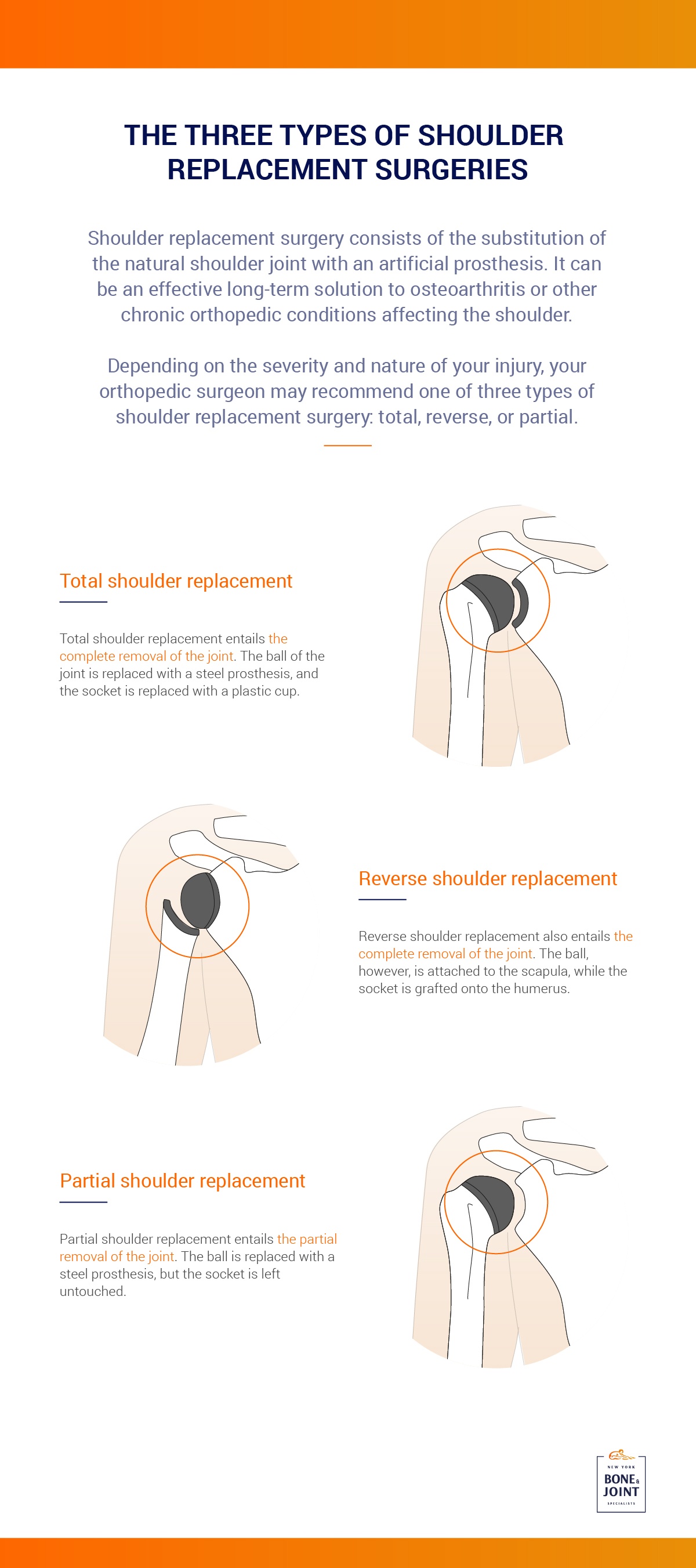If you’ve been experiencing chronic shoulder pain due to arthritis or degeneration, and conservative treatment methods have not eased your symptoms, your orthopedic specialist might suggest that you pursue shoulder replacement.
Shoulder replacement is a procedure involving the substitution of the shoulder joint with an artificial prosthesis. It can entail the replacement of the entire joint or just a part of it. Though much less common than knee replacement, shoulder replacement is nevertheless a similarly effective treatment for osteoarthritis and other conditions resulting in chronic joint pain.
TYPES OF SHOULDER REPLACEMENT
Depending on the severity of your symptoms, your orthopedic specialist may recommend total, reverse, or partial shoulder replacement.

Total Shoulder Replacement
As the name suggests, total shoulder replacement involves the complete removal of the shoulder joint. During the procedure, the surgeon replaces the head of the humerus (the ball of the shoulder joint) with a steel prosthesis, and the glenoid cavity (the socket of the shoulder joint) with a plastic cup that’s cemented or press-fit to the bone.
Reverse Shoulder Replacement
A reverse shoulder replacement also involves the complete removal of the joint, but unlike a total replacement, the artificial ball is affixed to the scapula, while the prosthetic socket is grafted onto the head of the humerus.
Partial Shoulder Replacement
In contrast to total and reverse replacements, a partial shoulder replacement involves the removal of the head of the humerus. The glenoid cavity is left untouched.
SHOULDER REPLACEMENT SURGERY
Shoulder replacement surgery is an open procedure, requiring a longer incision into the shoulder. During the operation, your surgeon will remove the damaged bone or cartilage, reshape the remaining bone as needed, and install the prosthesis before closing the incisions and dressing them accordingly.
SHOULDER REPLACEMENT RECOVERY
Recovery timelines for shoulder replacement can vary, but total, reverse, and partial replacements all come with a similar prognosis. In the days after the procedure, you’ll take anti-inflammatories and blood thinners for at least several weeks to alleviate pain and reduce the risk of blood clots.
After four to six weeks of rest, you’ll begin a physical therapy program designed to restore your shoulder’s range of motion and rebuild the surrounding muscles and tendons. You should be able to resume most normal activities after three months of rehabilitation, while complete recovery will require another several months of stretching and strengthening exercises.












